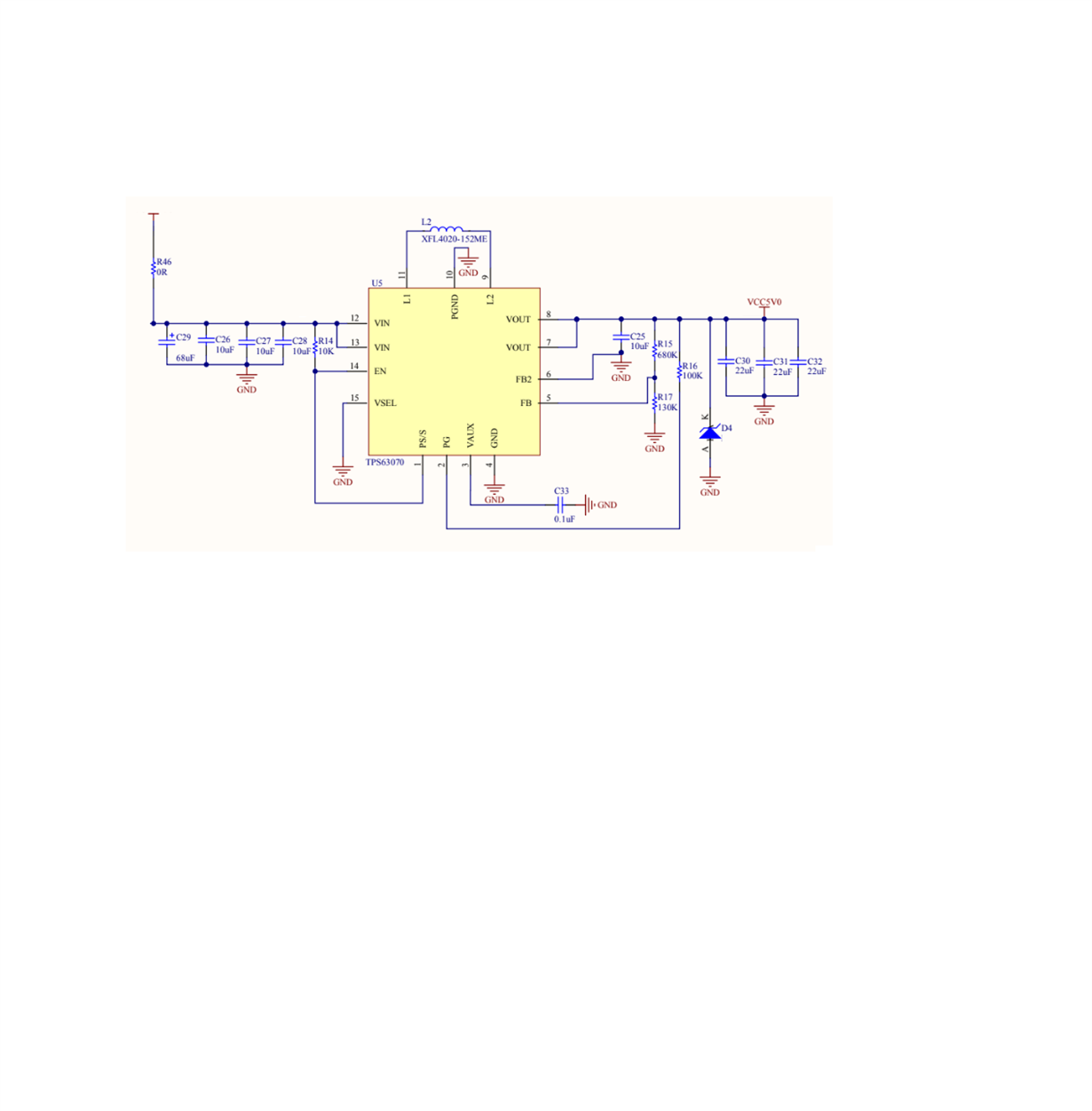Dear Sir/Madam,
I'm developing a new prototype od portable device, that use a lithium battery (3,7V and 3500mAh) as a main supply.
I'm using the following supply structure to supply the electronic circuit:
The start-up of circuit works fine and no problem is detected until the connection of additional part of circuit, that is supplied by TPS63070 as the rest of electronic system through the VLDO.
at the time of connection of additional circuit, a high peak current is required and 5V voltage (TPS63070) drops around 2V and the same time the output VLDO, causing functional system error.
I would like to avoid any change in the electronic system and additional part, then I inspected to determine what is the component that limits the current. Is it the batteries that can provide this inrush current or TPS63070 can't give higher current in this operating point?
It quite difficult to access to DC/DC converter output to acquire voltages or current. Hoverver, I have measurements of voltage and current of batteries. please, see the following oscilloscope measurements, could be need more resolution and accuracy but it's possible to take an ideal.
I see some interesting information in the TPS63070 datasheet that allow to calculate an estimation of Iout in TPS63070.
and,
Considering the best case that It's working with 85-95% efficiency, Vout =5V, Vin=3,7V and the input current is around 2A. The result in the boost mode is 1,26-1,4A.
I would like to know if I'm in the right way, and the values says that the converter is in the limit.Hence, this would indicated that is not limitation of battery, that it is right, because the manufacturer indicate more than 4A and limit of 3V for own protection circuit.
in this case, is the operation point of TPS63070 out of load regulation as the graphs shown?
Finally and if I'm not wrong with my hipotesis, I don't understand the next graph of datasheet, where you can though that converter can works with 3,7V to 5V with 2A (the temperature is measured and it's close to environment, 25ºC).
Please, can you help me and solve my doubts?
I have read severals e2e forums about similar issues with TPS63070, but It's not clear for me. Thanks in advance.
Best regards,



